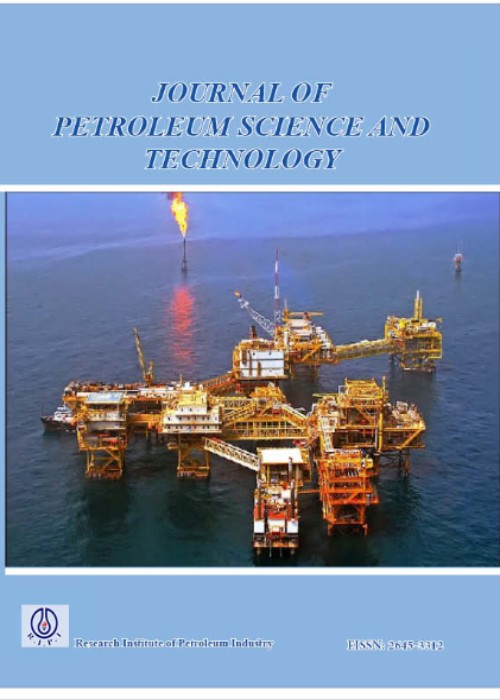Investigating the Effect of Polythin and Polydrill on the Properties of Drilling Fluids
Author(s):
Abstract:
In this study, synthetic sulfonated polymers were used in order to enhance the rheological properties of drilling fluids. The capability of these polymers in reducing the effects of environmentally friendly, but harmful, pollutants such as cement, calcium chloride, gypsum as well as pH changes were investigated. In the present work, two sulfonated synthetic polymers, namely Polythin and Polydrill, which are considered to be environmentally friendly polymers, were used. Polydrill controls the fluid loss and is resistant to high temperatures and also pollutants. The injection of this polymer into drilling fluid slightly increases the viscosity levels. Polythin prevents the precipitation of bentonite at high temperatures and facilitates fluid pumping by reducing its rheological and static shear strength. Polythin polymer also prevents the formation of bentonite gelation (precipitation of bentonite) at higher temperatures and is stable up to 260 °C. This polymer is also capable of completing the effects of fluid loss additives and reduction of filtration in HTHP drilling fluids. Furthermore, this polymer reduces rheology, strength, and static shearing values and facilitates pumping of the drilling fluid. The combination of aforementioned polymers improves the thermal resistance of drilling muds while maintaining the rheology and reducing the amount of filtrate for HTHP drilling fluids. In these experiments, the rheological properties of the fluid including apparent viscosity (AV), plastic viscosity (PV), yielding point (YP), gelation resistance or gel strength (GEL), fluid loss (FL), and the pH of the fluid were studied before and after the addition of the pollutants. The results indicate that certain proportions of these two polymers increase the rheological properties of drilling fluids and can significantly change the weight percentages of pollutants. It is also notable that the rheological properties were normally constant. However, in some cases, smaller values of rheological parameters enhanced the efficiency in the presence of pollutants. In the case of calcium chloride, rheological parameters (AV, PV, YP, and gel strength) are almost constant, while fluid loss greatly increases.
Keywords:
Language:
English
Published:
Journal of Petroleum Science and Technology, Volume:2 Issue: 1, Spring 2012
Page:
37
magiran.com/p1128345
دانلود و مطالعه متن این مقاله با یکی از روشهای زیر امکان پذیر است:
اشتراک شخصی
با عضویت و پرداخت آنلاین حق اشتراک یکساله به مبلغ 1,390,000ريال میتوانید 70 عنوان مطلب دانلود کنید!
اشتراک سازمانی
به کتابخانه دانشگاه یا محل کار خود پیشنهاد کنید تا اشتراک سازمانی این پایگاه را برای دسترسی نامحدود همه کاربران به متن مطالب تهیه نمایند!
توجه!
- حق عضویت دریافتی صرف حمایت از نشریات عضو و نگهداری، تکمیل و توسعه مگیران میشود.
- پرداخت حق اشتراک و دانلود مقالات اجازه بازنشر آن در سایر رسانههای چاپی و دیجیتال را به کاربر نمیدهد.
In order to view content subscription is required
Personal subscription
Subscribe magiran.com for 70 € euros via PayPal and download 70 articles during a year.
Organization subscription
Please contact us to subscribe your university or library for unlimited access!


